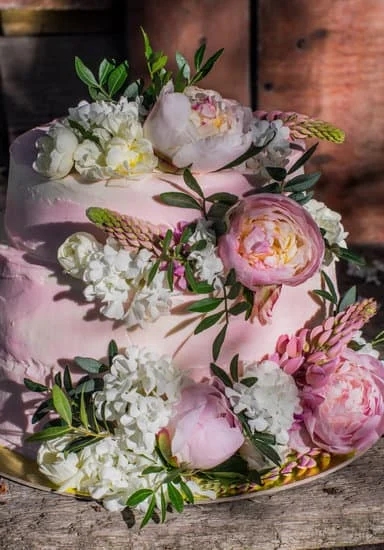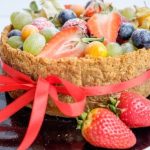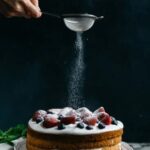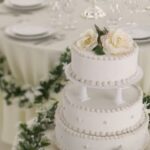Cake decorating is an art form that requires not only creativity but also the right tools and ingredients. One of the key elements in creating stunning cakes is choosing the best icing to adorn your masterpiece. The right icing can make all the difference in achieving a professional-looking finish and adding delicious flavor to your creation.
When it comes to cake decorating, there are several types of icings commonly used by bakers around the world. Each type has its own unique characteristics, advantages, and challenges. From the creamy Buttercream to the versatile Fondant, the traditional Royal Icing, and the luxurious Ganache, each icing brings its own flair to cake decorations.
Understanding the differences between these icings and knowing how to work with them can elevate your cake decorating skills to new heights. In this article, we will delve into the world of cake decorating icings, exploring their pros and cons, variations, best applications for different types of cakes, and tips for successful decoration.
So whether you’re a beginner looking to enhance your skills or a seasoned baker aiming to perfect your craft, choosing the best icing for your cake decorating endeavors is essential.
Types of Icings Commonly Used for Cake Decorating
When it comes to cake decorating, choosing the right icing can make a world of difference in the final outcome of your creation. There are several types of icings that are commonly used by bakers and cake decorators, each with its own unique properties and techniques. Whether you’re looking for a smooth finish, intricate designs, or rich flavors, understanding the characteristics of each type of icing is essential in achieving your desired results.
1. Buttercream: Buttercream icing is one of the most popular choices for cake decorating due to its creamy texture and versatility. There are different variations of buttercream icing such as American buttercream, Swiss meringue buttercream, and Italian meringue buttercream. Each variation has its own pros and cons, from easy workability to stability in warmer temperatures. American buttercream is quick and simple to make, while Swiss meringue offers a smoother finish and less sweetness.
2. Fondant: Fondant icing is known for its ability to create a flawless look on cakes with sharp edges and intricate designs. Working with fondant requires a bit more skill and practice compared to other icings, but it offers benefits such as a clean canvas for painting or sculpting decorations. Fondant comes in various colors and can be flavored to complement the cake underneath. It provides a smooth surface perfect for elaborate wedding cakes or themed creations.
3. Royal Icing: Royal icing is a classic choice for detailed decorations like piping flowers, writing messages, or creating delicate lace patterns on cakes. Made from egg whites and powdered sugar, royal icing dries hard which makes it ideal for gingerbread houses or cookie decorating as well. Its smooth consistency allows for precise control when piping intricate designs onto cakes or cookies.
4. Ganache: Ganache is a luxurious chocolate mixture made from cream and chocolate that can be used both as an icing and filling for cakes. With its rich flavor and glossy finish, ganache adds an elegant touch to any dessert. Ganache can be poured over cakes for a decadent glaze or whipped into frosting for a velvety texture that pairs well with various flavors like raspberry or coffee.
Buttercream Icing
There are different variations of buttercream icing that offer unique textures and consistencies. American buttercream is the most common variation, made with powdered sugar, butter, and flavorings. It has a sweet taste and is easy to work with for beginner decorators.
Swiss meringue buttercream involves cooking egg whites and sugar over a double boiler before whipping in butter, resulting in a light and silky texture. Italian meringue buttercream requires pouring hot sugar syrup into whipped egg whites before adding butter for a stable and smooth finish.
Despite its delicious taste and versatility, buttercream icing does have some drawbacks. It can be sensitive to temperature changes, making it prone to melting in warm environments. Additionally, piping intricate designs may be challenging with softer variations of buttercream. However, by adjusting the consistency of the icing and using proper techniques, these challenges can be overcome for stunning cake decorations using buttercream.
Fondant Icing
Working With Fondant
When using fondant, it’s important to start with a smooth buttercream base on your cake to ensure that the fondant has something to adhere to. Roll out the fondant on a surface dusted with powdered sugar or cornstarch to prevent sticking. Carefully lift the rolled fondant using a rolling pin and drape it over your cake. Smooth out any wrinkles or air bubbles by gently pressing the fondant against the cake.
Benefits of Using Fondant
One of the main benefits of using fondant for cake decorating is its versatility. Fondant can be easily colored, flavored, and molded into intricate shapes and designs. It also provides a clean canvas for elaborate decorations such as sugar flowers, figurines, and textures that may be challenging with other types of icing. Additionally, fondant creates a barrier that helps seal in moisture, keeping cakes fresh for longer periods.
Overall, when considering what is the best icing to use for cake decorating, fondant is an excellent choice for those looking to achieve professional-looking results with intricate designs and decorations. While it may require some practice and patience, the finished product can be truly stunning.
Royal Icing
One of the traditional uses of royal icing is in decorating wedding cakes. Its smooth texture allows for elegant finishes such as lace patterns, delicate piping details, and intricate scrollwork. The hardening property of royal icing also helps these decorations maintain their shape and structure over time, which is essential for special occasion cakes that need to be displayed for an extended period.
In addition to wedding cakes, royal icing is also ideal for decorating gingerbread houses around the holidays. The quick-drying nature of this icing ensures that the pieces of the gingerbread house stick together firmly, creating a stable structure that can be decorated with candies and other embellishments. Royal icing can also be tinted with food coloring to create vibrant decorations that will truly make your gingerbread house stand out.
| Royal Icing Benefits | Best Applications |
|---|---|
| Dries hard for sturdy decorations. | Decorating wedding cakes with intricate designs. |
| Allows for detailed piping work. | Decorting gingerbread houses during holidays. |
Ganache Icing
How to Make Ganache
To make ganache, simply heat heavy cream until it begins to simmer, then pour it over chopped chocolate in a heatproof bowl. Let it sit for a few minutes before stirring until the chocolate is fully melted and combined with the cream. The ratio of chocolate to cream will determine the consistency of your ganache – for a thicker ganache suitable for piping decorations, use more chocolate, while a thinner ganache can be poured over cakes for a glossy finish.
Using Ganache for Flavor and Decoration
One of the advantages of using ganache for cake decorating is its versatility when it comes to flavors. You can infuse ganache with different extracts, liqueurs, or spices to customize the taste according to your preferences. Additionally, ganache can be colored with gel food coloring or used as a base for creating intricate decorations like drips or swirls on cakes. Its smooth texture makes it ideal for achieving clean lines and elegant finishes on desserts.
Choosing the Best Icing for Different Types of Cakes
When it comes to cake decorating, choosing the right icing is crucial to achieving the desired look and taste of your masterpiece. Different types of cakes require different icings to complement their textures and flavors. Understanding which icing works best for each type of cake will ensure that your creations are not only visually stunning but also delicious. Let’s explore the best icing options for various types of cakes: layer cakes, wedding cakes, cupcakes, and sheet cakes.
For layer cakes, which are typically stacked with multiple layers of cake and filling, buttercream icing is often the go-to choice. Its smooth texture makes it easy to spread between layers and on the surface of the cake.
Whether you opt for American buttercream (made with powdered sugar and butter), Swiss meringue buttercream (cooked egg whites and sugar whipped with butter), or Italian meringue buttercream (cooked sugar syrup poured into whipped egg whites), you can achieve a beautifully frosted layer cake with a rich flavor profile.
When it comes to wedding cakes, fondant icing is a popular choice among professional cake decorators due to its smooth finish and ability to hold intricate designs. Fondant provides a clean canvas for creative decorations such as elaborate flowers, intricate patterns, and realistic sculptures. While some may find fondant less palatable than buttercream, its versatility in design makes it a top contender for elegant wedding cakes.
For cupcakes, royal icing can be an excellent option for those looking to create decorative toppings that harden for a clean finish. This type of icing is traditionally used in cookie decorating but can be easily adapted to adorn cupcakes with intricate designs like delicate lace patterns or 3D embellishments. Royal icing offers precise details that can elevate simple cupcakes into eye-catching treats at events like weddings or birthdays.
Tips for Successful Cake Decorating With Different Icings
Decorating a cake can be a delightful experience, but it also requires some skill and know-how when it comes to choosing the right icing. One of the key factors that can make or break your cake design is selecting the best icing for your specific decorating needs. So, what is the best icing to use for cake decorating?
It ultimately depends on what you are trying to achieve with your cake design. Each type of icing has its own unique characteristics that make it suitable for different decorating techniques and styles.
Buttercream icing is a popular choice for many cake decorators due to its versatility and ease of use. It’s perfect for creating smooth finishes, piping intricate designs, and adding texture to your cakes. American buttercream is quick and simple to make, while Swiss meringue buttercream offers a smoother consistency.
Italian meringue buttercream is known for its stability when working in warm environments. However, buttercream may not hold up well in high temperatures or humidity, so keep this in mind when using it for outdoor events or in hot climates.
On the other hand, fondant icing provides a polished and clean look to cakes, making it ideal for creating sleek designs and intricate decorations. Fondant can be rolled out thin to cover cakes smoothly or molded into various shapes for more complex designs. While fondant may not have the same flavor as buttercream, its pliability and durability make it a favorite among professional bakers and decorators for wedding cakes and special occasions where a flawless finish is desired.
Conclusion
In conclusion, the choice of icing for cake decorating plays a significant role in determining the final outcome of your creations. Each type of icing – Buttercream, Fondant, Royal Icing, and Ganache – has its own unique qualities and benefits that cater to different preferences and needs. When deciding what is the best icing to use for cake decorating, it ultimately comes down to personal preference, the type of cake being decorated, and the desired aesthetic.
Buttercream icing is a classic choice loved for its versatility, creamy texture, and ability to hold intricate designs. Whether you opt for American style with powdered sugar or Swiss meringue with a lighter touch, buttercream offers decorators plenty of room for creativity. Fondant provides a smooth canvas for elaborate designs and decorations while having the added advantage of sealing in moisture within the cake.
Royal icing excels in creating fine details and delicate work due to its ability to harden after application. On the other hand, ganache exudes sophistication with its rich chocolate flavor that can be used both as an icing or filling.
When choosing the best icing for different types of cakes like layer cakes, wedding cakes, cupcakes, or sheet cakes, consider factors such as taste preferences, design requirements, and structural needs. Remember that successful cake decorating with any icing requires practice, patience, and understanding of techniques specific to each type. Whichever icing you choose for your next baking project, make sure to experiment with various styles and methods to discover what works best for you as a cake decorator.
Frequently Asked Questions
What Frosting Do Professionals Use?
Professionals often use Swiss meringue buttercream or Italian meringue buttercream for frosting cakes. These types of frosting are known for their smooth texture, stability, and ability to hold intricate designs well.
What Is the Best Frosting for Decorating a Cake?
The best frosting for decorating a cake depends on the desired outcome. Buttercream frosting is popular among home bakers due to its ease of use and versatility. It can be flavored and colored in various ways to suit different themes or occasions.
Is Frosting or Buttercream Better for Cake Decorating?
When it comes to cake decorating, many people prefer using buttercream over traditional frosting due to its smoother consistency and ability to hold shapes better. Buttercream can be easily piped into intricate designs and holds up well in warmer temperatures compared to regular frosting.

Welcome to our cake decorating blog! My name is Destiny Flores, and I am the proud owner of a cake decorating business named Cake Karma. Our mission is to provide delicious, beautiful cakes for all occasions. We specialize in creating custom cakes that are tailored specifically to each customer’s individual needs and tastes.





